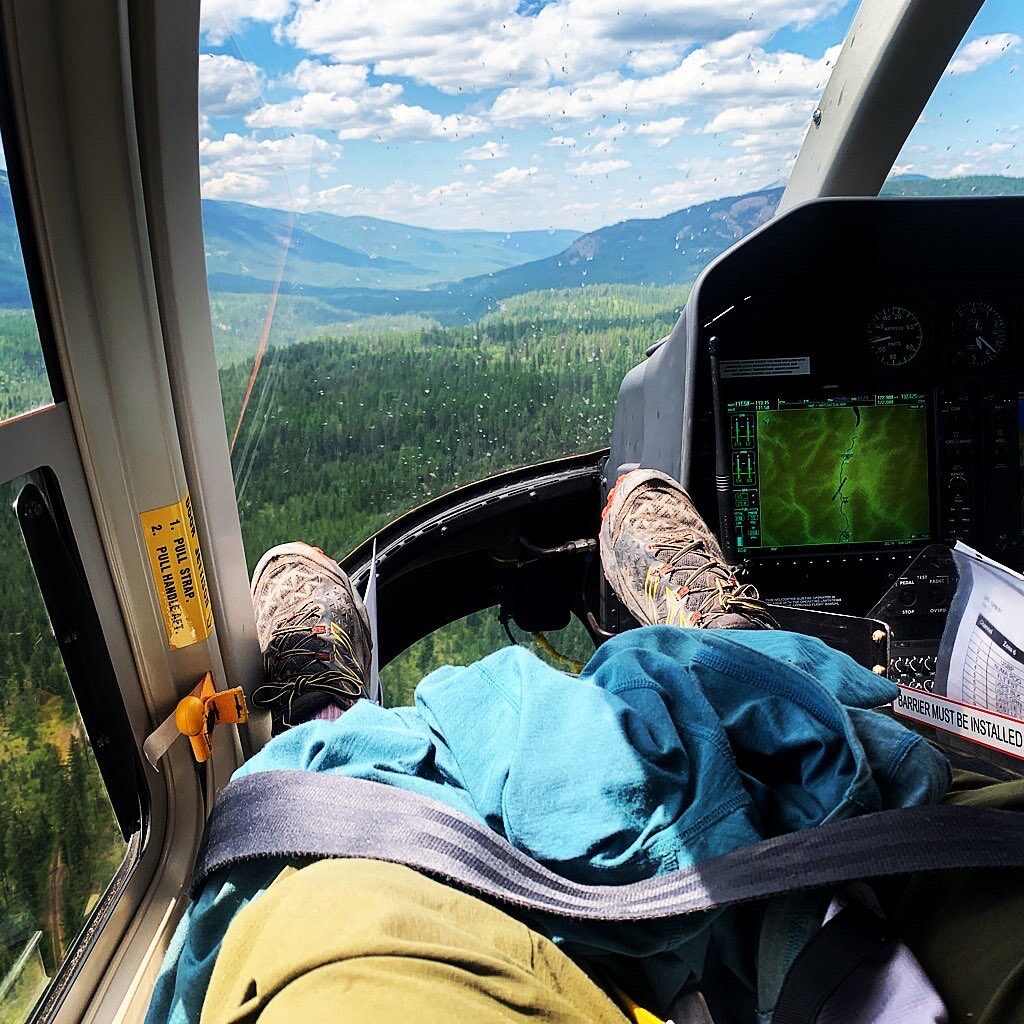
A few years ago, I soloed the GR5, the Grand Randonée Cinq, a long-distance footpath that traverses the French Alps. Feeling strong and self-sufficient, I ignored my husband’s concern about staying connected, assuring him I’d check in whenever I reached a village.
But I wasn’t entirely clear on just how remote those villages would be, most without any internet access at all, and even if weefee was available, it required a complex sign-up method and a local phone number.
I’m not afraid to talk to people I meet on trail, so in school-girl French I’d ask random tourists if I might use their phone to email my husband. You can imagine Richard’s surprise receiving a note from Pierre or Marguerite with loads of misspellings on a French keyboard.
Needless-to-say, after that episode, we purchased a GPS with tracking, two-way communication and SOS capability. For thousands of miles thereafter, my Garmin inReach Mini served as our daily checkin. I’d send a quick, “Starting my hike!” and then he’d receive a series of automated pings throughout the day showing him how far I’d walked.
What never occurred to me was needing an SOS. I’d always assumed because I was careful and well prepared, I could take care of myself.
My emergency happened in Montana on the Continental Divide Trail. I was going strong, but difficulties were stacking up. It was the hottest summer on record with temperatures soaring into the upper 90’s. I’d started with three hikers who planned to stick together through grizzly country, but because I was older and slower, I mostly walked alone. By the time I reached the Bob Marshall Wilderness and its infamous mile-upon-mile of downed trees, I was exhausted.
It was actually on flat ground when my heart skipped a beat and started racing. I’d experienced this phenomenon before, but this time was much worse. My body felt like lead and I could hardly breathe. I was dizzy and on the verge of passing out with wave upon wave of nausea. But there was nowhere to stop, so I lumbered four miles to a backcountry cabin at Rock Creek Station. Anxious and insecure, I wondered if this what a heart attack felt like.
Messages through satellite are not fast and sometimes come out of order. When I contacted Richard, he at first encouraged me, suggesting I look around for a place to set my tent and wait it out.
I did that, but kept thinking back to an interview I conducted on the Walking Distance podcast with Rebecca Olson, a Search and Rescue volunteer in the Cascades. She said, “If you’re in a situation where you’re in danger don’t let (the thought that you should be responsible for yourself) prevent you from calling (for help) because…if you wait, you could make the mission a lot harder for us (and) your chances of surviving may not be as good.”
I wrote Richard again, telling him that I was gasping for air and that it was still thirty miles to a road. What if this gets worse? Shame welled up in me, that this could have been prevented or at least managed, that I’d pushed myself too hard and wasn’t eating right, and that I allowed myself to get in a situation where I was utterly alone.
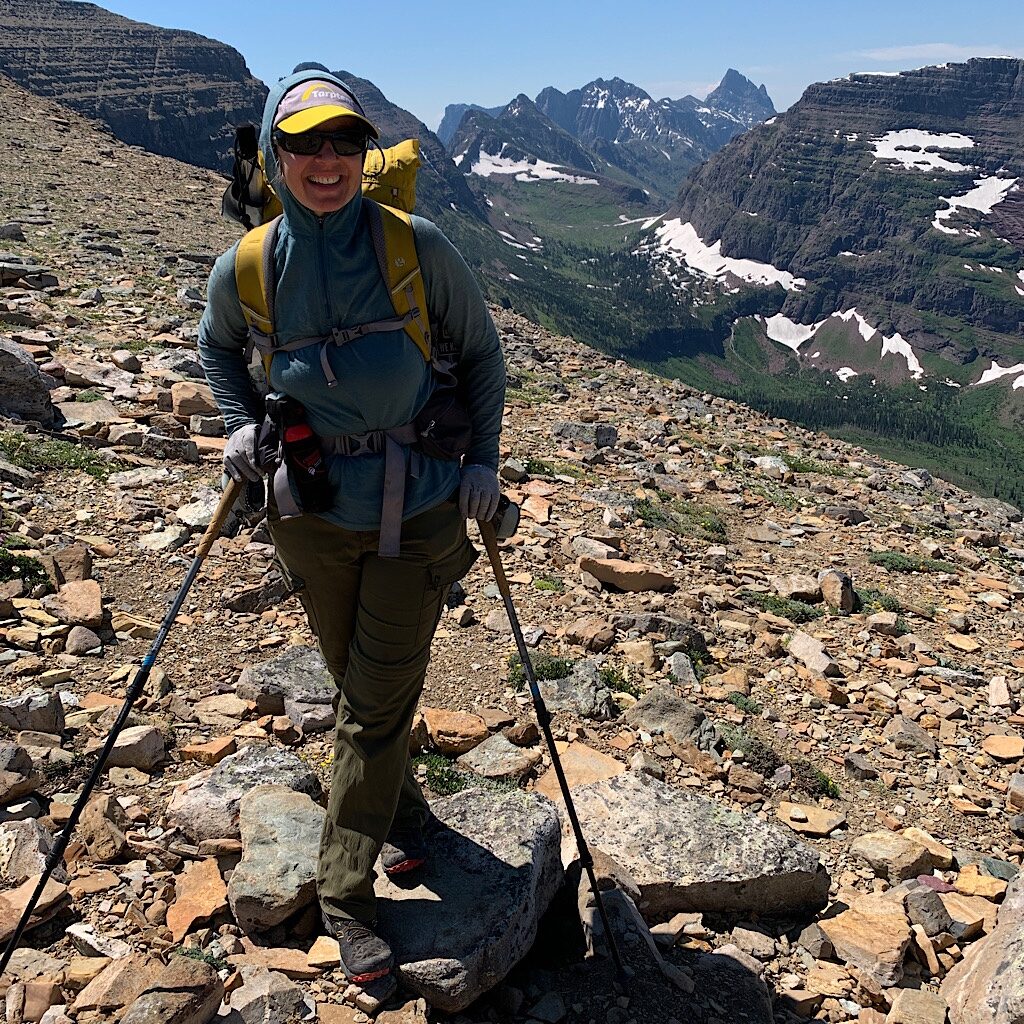
Stop, Think, Observe, Plan
I knew that the most important thing to do in an emergency is to stay calm. The acronym STOP spells it out: Stop, Think, Observe, and Plan.
Even gasping for air, I was able to stop and listen to the water gurgling in the stream. I noticed how beautiful it was under towering Ponderosa Pine, the sky eggshell blue and the sun high in the sky. I still couldn’t breathe, but I could think more clearly and I remembered from backcountry first aid courses the steps to take when encountering an injured person. First, take charge of the situation. Then approach the patient safely, perform emergency rescue and urgent first aid. Next, protect the patient and check for other injuries. And finally, make a plan and carry it out.
My heartbeat was not slowing down and I was in real trouble. I couldn’t administer first aid because I didn’t have the tools. And because I was unable to help myself and needed medical attention, I had to make a plan and carry it out.
The Garmin Mini has a trapdoor marked SOS on its lower right side. The door protects the button from getting pushed accidentally, though the button also has its own protective element. You need to hold the button down for a countdown and finally answer the question if you meant to call for help. I pressed yes.
I have an emergency, and I need you to send help.
Within 6 minutes, I received a reply.
This is the IERCC, (International Emergency Response Coordination Center) what is your emergency?
After I described by symptoms, shame flooded me again. Should I have asked for help? Couldn’t I just wait this out?
The next message came 9 minutes later:
Alison, I have spoken with emergency services and they are getting help to your location and have requested you remain where you are.
In the next message, they send a contact for the director of the local Search and Rescue (SAR). Meanwhile, they called Richard. A side note here about communicating through a Garmin inReach Mini. To write full sentences, it’s best to bluetooth to your phone because there’s no efficient keyboard on the device. Each message is allowed a max of 160 characters, so you need to get right to the point. Furthermore, all that sending and receiving uses power. If you needed to wait a day or overnight for rescue, it’s important to keep track of your battery power so as not to run out.
Thankfully, my wait was less than two hours before I heard the chug-chug of the helicopter – no, wait, two helicopters.
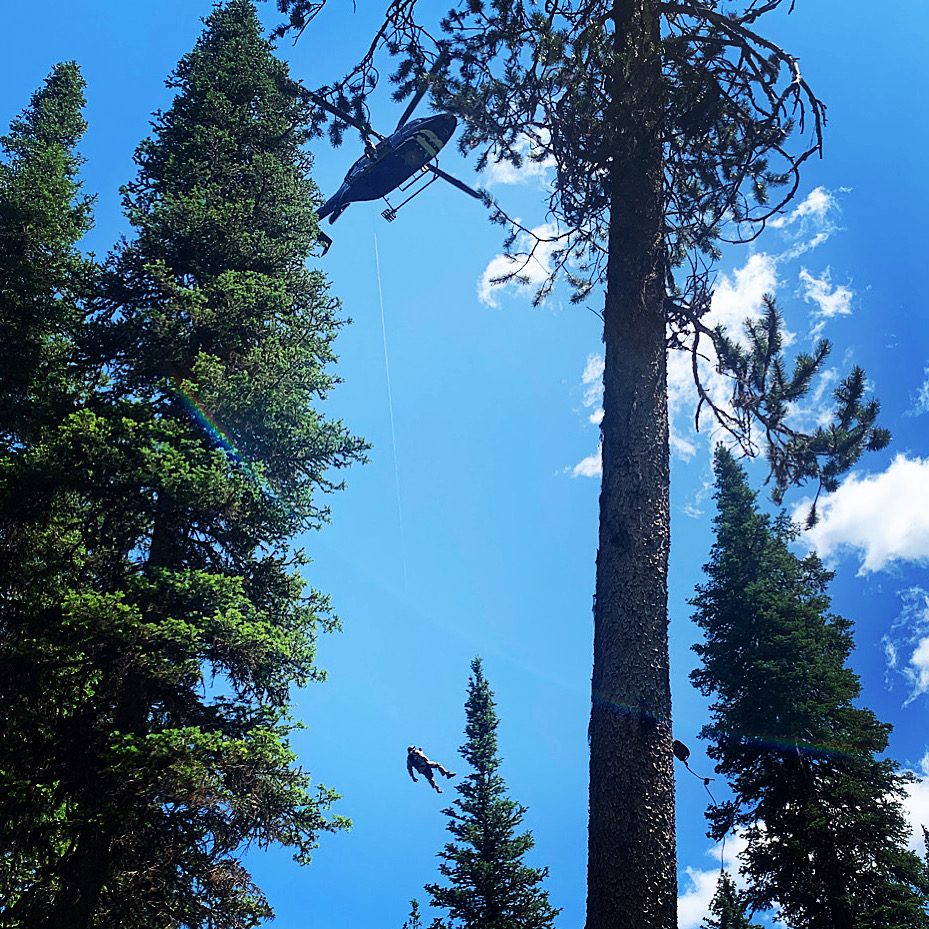
(S)earch (A)nd (R)escue
My mind went from shame directly to fear; fear that this ordeal was going to be a financial catastrophe. It’s funny that Garmin offers a very affordable SAR plan that covers most typical hiker rescues for about $25 per year, less than your bar tab on a Zero. But I didn’t sign up. My thinking was that Garmin already charged a yearly subscription plus a monthly activation fee and extra charges per text. Again, my over-inflated sense of self was to blame and I took a gamble that I’d never need the insurance. As the helicopters circled overhead looking for a place to land, I prayed that my health insurance covered air ambulances.
The Life Flight from Logan Health in Kalispell was unable to land anywhere in this mountainous forest. I had advised them of that fact in one of my messages. So, they brought along friends from Two Bear Rescue in a chopper with a cable hoist setup.
As they hovered, Chris rapelled down to me. Focused and businesslike, he ensured I was conscious, then placed me in a jacket-like harness and helmet. “I’m scared,” I said. “I’m terrified.” Chris was expert at many things including ignoring me. He threw my backpack over his shoulders and clipped me in, then sat himself on my knees as we floated up above the swaying trees and I said goodbye to the trail.
As I reached the door, another man hooked my caribiner to the helicopter and pulled me in, and off we went. It was dramatic and skillful, but I wondered what would have happened had my emergency been in a locale without a hoist available?
They gave me a headset to drown out the sound and shoved tubes up my nose carrying oxygen. I felt awful but figured if this ride was going to bankrupt me, I might as well enjoy it. The views were spectacular of massive mountains, billion-year-old reef layers, pressed, cooked, squeezed, uplifted, and shifted into a glorious masterpiece of nature, as if waves frozen in time.
We landed in a field and met the life-flight. The EMT’s got to work quickly, stabbing me with an IV and attaching electrodes to my chest. They couldn’t roll up my sleeves so asked if I might take off my shirt. I warned them with a weak smile that I’m middle aged and got a laugh.
Everything was normal – “The blood pressure of a 20-year-old,” they told me, “Plenty of oxygen in the blood, good color, heart rate of an athlete except ‘thready’ and thin.” I tried to stand up and fell over. When they offered to carry me on a stretcher, I lost it, sobbing all the way to the hospital. I wondered if their training included helping the patient maintain her dignity. They tried to keep my spirits up by telling me about their own rescue sagas. And most important, they promised never to speak badly about plucking this old lady off the mountain.
The Emergency Room was ice cold. The medics were replaced by nurses with a collections agent carrying a clipboard hovering closely. Tests were performed, X-rays taken, questions asked before finally the on-call doctor came in. He told me it wasn’t a lack of electrolytes. It wasn’t the heat or going too hard, though all of that might have contributed to the episode. What I have is Supraventrical tachycardia, (SVT) an abnormally fast or erratic heartbeat caused by an aberrant electrical signal. No one knows for sure why people develop it and it’s not normally deadly, but it can make the blood pressure drop to nothing and that’s why I felt heavy, gasping and on the edge of passing out. Also, if the racing heart lasts longer than a few seconds, the heart could stop.
Well, there’s that.
He then proceeded to share a story with me about a woman who broke her leg in the same place I was picked up. She set it with her trekking pole and managed to walk out, but every step, she was stalked by hungry animals. How close did I come to becoming a bear snack myself?
When I finally returned home, I saw a cardiologist who found no damage to the heart or any disease, and we decided together against an ablation which could stop the episodes but comes with its own set of risks. So now, I pack beta blockers when I backpack and have successfully stopped three more SVT episodes on trail and haven’t needed a rescue.
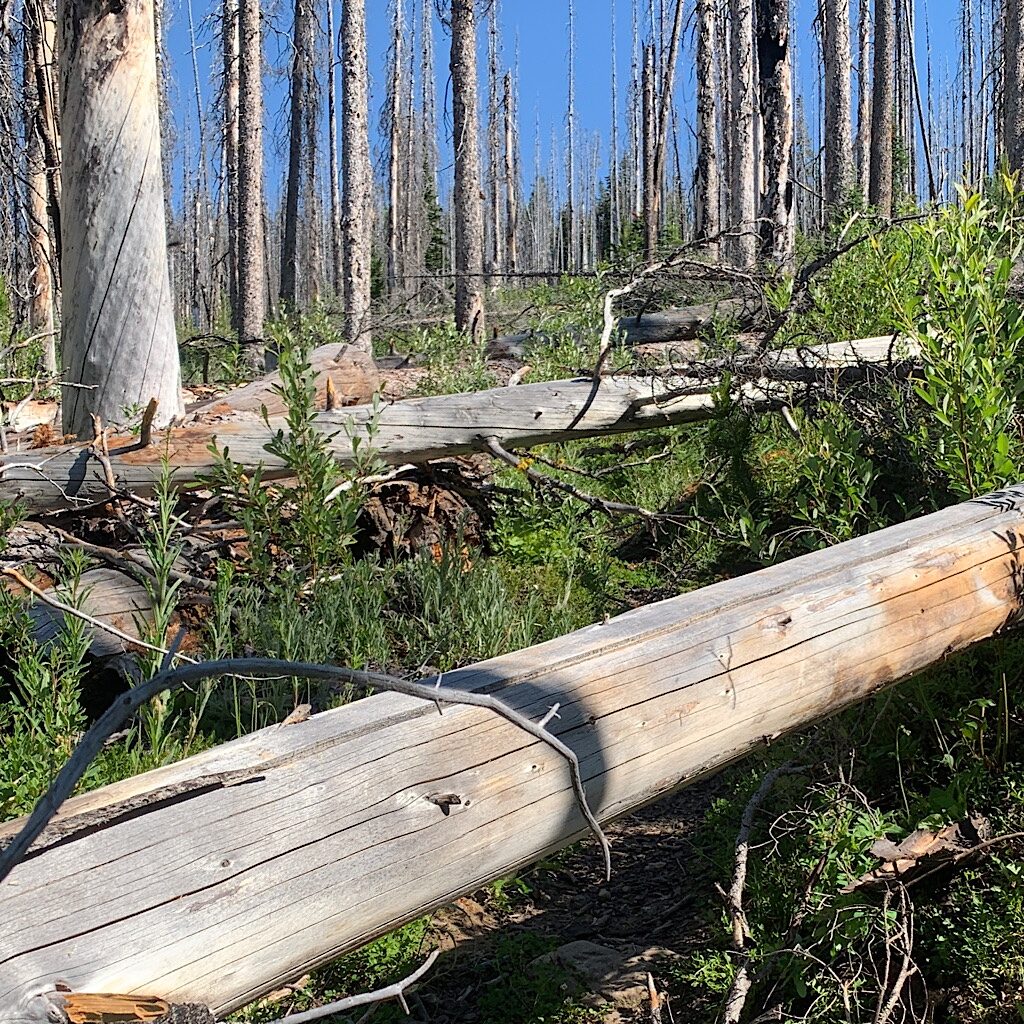
Managing an emergency
There are many lessons to take from this ordeal. Don’t hike alone might be one, which is tricky for me because being alone on trail is my happy place. Listen to your body and try to mitigate stressors could be another, but that’s also tough on a thru-hike which can be filled with stress.
So I might suggest some practical advice. One is to make sure you have good health insurance. There was nothing creepier than being followed around in the ER by a collections agent. I felt horrible physically and emotionally and the last thing I needed to focus on was how I was going to pay for my care. I was very lucky that my insurance covered all emergency expenses including 100% of the life flight, but not all insurance carriers do. To put things in perspective, the bill for the transport was over $22,000. That would be very tough for just about anyone to pay.
Also, add SAR insurance. I have it now and purchased it through Garmin choosing the most basic level, which would have easily covered all of the costs for rescue. Always take some form of satellite communication system into the backcountry. You really never know what might happen and cell service is rarely available in the wilderness.
Now while insurance and communication are very important, it’s critical that we hikers take preparedness seriously. There are several habits we can adopt which don’t cost a thing:
Before heading out, tell someone where you are going and when to expect to hear from you. If you unable to communicate from the trail, someone else can call for you if you haven’t shown up, but no one can help you if they don’t know you’re in trouble.
Have a plan and don’t push beyond what you are prepared to do or have the equipment to do. This includes ensuring your return is still in daylight, that you have the right tread for the conditions like ice or snow, that you know where water sources are, that you’re aware of the weather, etc. This neatly brings me to the ten essentials.
Pack the Ten Essentials
- Navigation (map, compass, altimeter, satellite communication)
- Headlamp (extra batteries)
- Sun protection
- First aid
- Knife (and repair kit)
- Fire (or stove)
- Shelter (can be an emergency bivvy)
- Extra food
- Extra water (or a means to purify)
- Extra clothes
More on the Ten Essentials from Steve McClure at The Mountaineers
Most thru-hikers have these covered, but day hikers are particularly at risk if they are injured, lost or trapped by weather or other hazards and haven’t packed anything to help themselves out. One question you might ask yourself when heading out is, “Am I prepared to spend the night here if something goes wrong and I need to wait for rescue?
And by all means take a survival and backcountry first aid course. The rule of three can quell panic especially if you are lost or benighted:
- You can survive for three hours without shelter.
- You can survive for three days without water.
- You can survive for three weeks without food.
Obviously finding shelter would be your first priority should you have a problem because rescue is never immediate. You are on your own, at least for a while, with the things you packed.
By grace I was saved
About a week after I got home, I received a beautiful letter from Two Bear Rescue. It read, “On July 8th, 2021, Two Bear responded to a call for help. This call ended with our team hoisting you out of your situation. Because of your special ride on our hoist, I have enclosed a token as a reminder that EVERY day is a gift and to never take it for granted.”
I learned later that Two Bear provides air rescue for lost and injured people in the backcountry of Montana and Idaho, plus Eastern Oregon and Washington. A philanthropist from Whitefish named Michael Goguen covers the expenses for the program with no cost to taxpayers – or to me.
The token I received is a medal embossed with the Two Bears logo along with their motto, “By grace you are saved.” I keep it close, in fact I can see it now as I write, and it reminds me to be prepared and responsible, to keep calm and make a plan if I’m in trouble, to accept that all of us are vulnerable to emergencies and to feel gratitude that help was available.
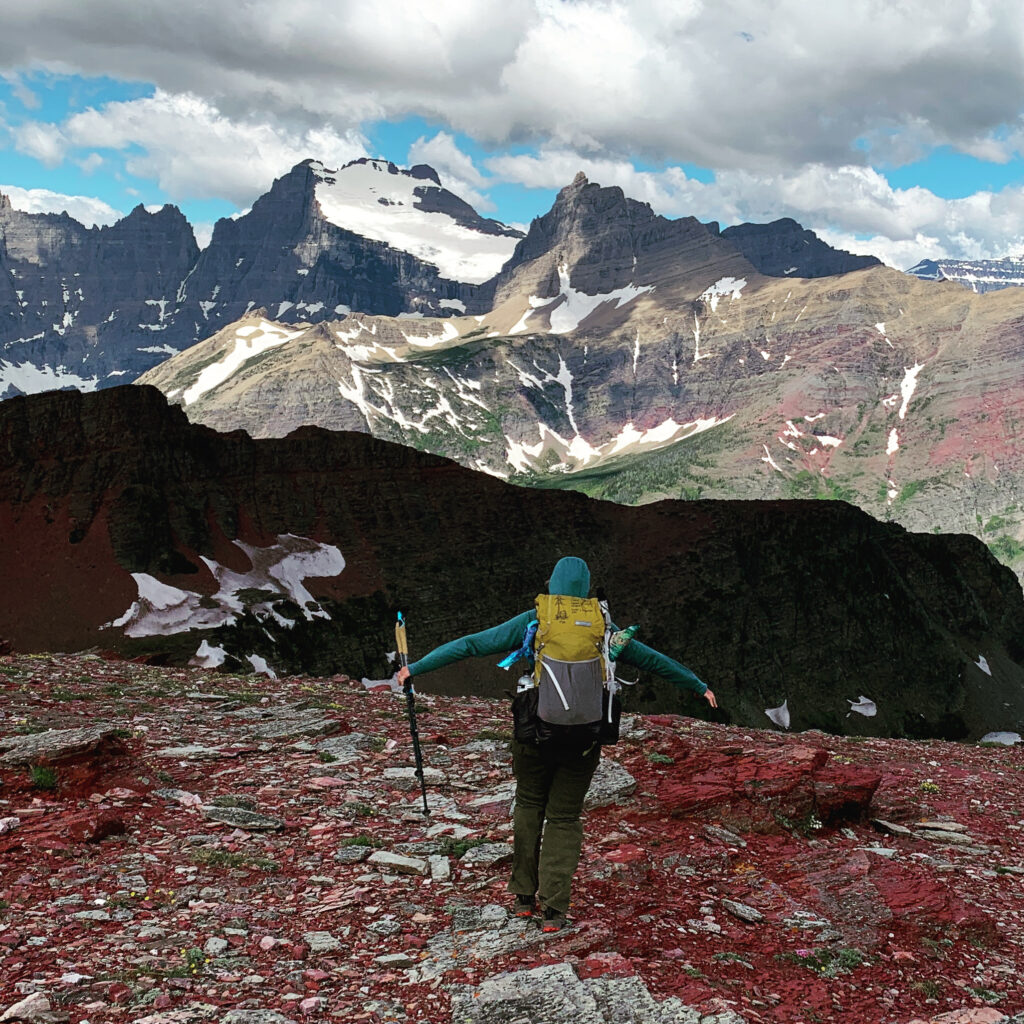


2 Responses
Excellent, Alison! This should be required reading for all hikers.
Thank you so much, Carl! I feel so blessed it all worked out and am ready for my next adventure – one step at a time! 🐥